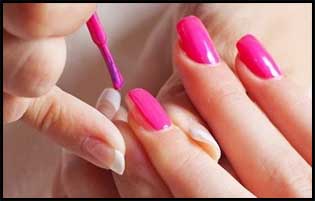- Home
- Editorial
- News
- Practice Guidelines
- Anesthesiology Guidelines
- Cancer Guidelines
- Cardiac Sciences Guidelines
- Critical Care Guidelines
- Dentistry Guidelines
- Dermatology Guidelines
- Diabetes and Endo Guidelines
- Diagnostics Guidelines
- ENT Guidelines
- Featured Practice Guidelines
- Gastroenterology Guidelines
- Geriatrics Guidelines
- Medicine Guidelines
- Nephrology Guidelines
- Neurosciences Guidelines
- Obs and Gynae Guidelines
- Ophthalmology Guidelines
- Orthopaedics Guidelines
- Paediatrics Guidelines
- Psychiatry Guidelines
- Pulmonology Guidelines
- Radiology Guidelines
- Surgery Guidelines
- Urology Guidelines
Nail treatments do not affect Pulse oximetry readings

Nail treatments such as acrylic nails or nail polishes do not affect the readings of patients' oxygen levels measured by Digital pulse oximetry, as previously thought, according to a study presented at Euroanaesthesia congress in Copenhagen, Denmark.
Digital pulse oximetry (DPO) is universally used to measure blood oxygen levels in patients, however, there are concerns that the readings they produce can be affected by treatments such as nail polish or acrylic nails. The DPO device fits around the fingertip including the nail, and the side facing the nail is emitting light which is detected by a sensor on the far side of the fingertip.
Dr. James Purcell and his associates conducted a study to survey attitudes and approaches to the issue among healthcare professionals, and experimentally assess the effect of nail treatments on SpO2 measurements under different physiological conditions.
The researchers conducted an experiment on 12 volunteers to analyze the effects of nail polish of different colors and acrylic nails from popular brands on SpO2 under varying physiological conditions (healthy, venous congestion, and venous constriction).
The respondents were given the questionnaire to assess their knowledge and opinions on how nail treatments impact clinical decisions pertaining to DPO. There were 86 responses to the survey questionnaire with 45% of respondents saying that nail treatments affected the way they conducted their clinical practice. More than 30% of those surveyed had intervened to remove nail treatments to prevent them affecting DPO readings.
The study found that none of the nail treatments examined caused more than one percent variation in SpO2 readings under any of the physiological conditions tested compared to untreated nails. Furthermore, none of the treatments resulted in a SpO2 of <95 percent, at which intervention with oxygen therapy is recommended.
The study concluded that the data collected from the experiment indicated that the nail treatments specified do not contribute significantly to a difference in blood oxygen readings, having no clinical impact on patient care.

Disclaimer: This site is primarily intended for healthcare professionals. Any content/information on this website does not replace the advice of medical and/or health professionals and should not be construed as medical/diagnostic advice/endorsement or prescription. Use of this site is subject to our terms of use, privacy policy, advertisement policy. © 2020 Minerva Medical Treatment Pvt Ltd